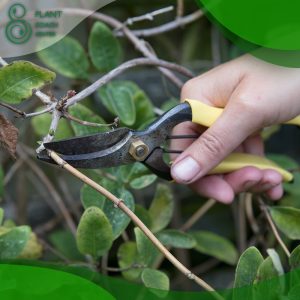When Do You Prune Lilac Bushes?
Welcome to the world of lilac bushes, where nature’s elegance meets the gardener’s care. These enchanting shrubs, known for their fragrant blooms and captivating presence, are a cherished addition to many landscapes. Yet, as with any living beauty, nurturing their growth requires a delicate touch and understanding of pruning.
In this guide, we journeyed through the seasons and techniques that define the when, why and how of pruning lilac bushes. From deciphering your plants’ secret signals to mastering the pruning cuts that shape their destiny, we unravel the mysteries of cultivating healthier, more vibrant lilacs. Whether you’re a seasoned horticulturist or a budding green thumb, join us as we uncover the rhythmic choreography of timing and the intricate dance of shears, revealing the rewards that come with proper lilac care.
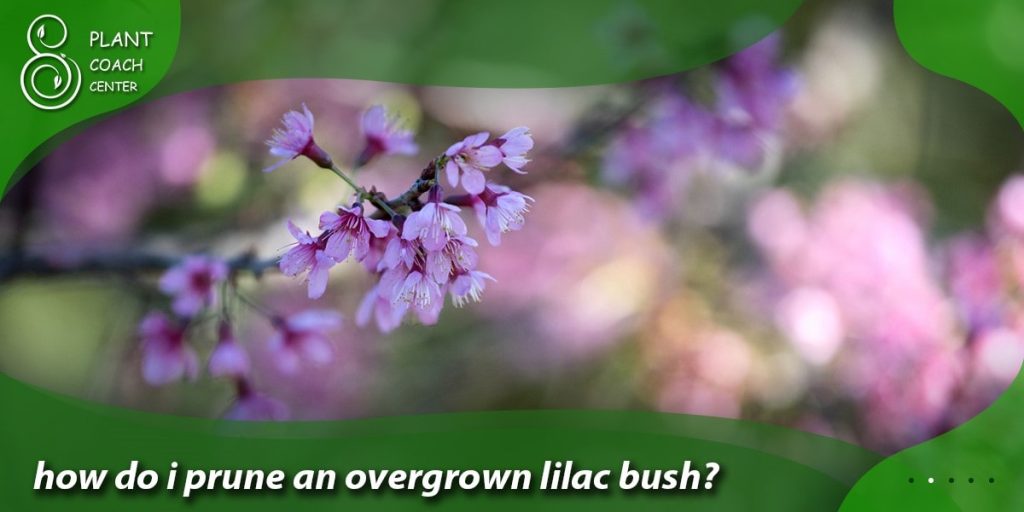
The Timing Tango: Finding the Perfect Season
Pruning lilac bushes is a delicate dance that hinges on the perfect timing. To ensure your lilacs flourish year after year, it’s essential to sync your pruning schedule with the rhythms of nature. The ideal time for pruning lilac bushes largely depends on the specific goal you have in mind.
Early Spring Symphony
As winter’s chill subsides and the first signs of spring emerge, lilac bushes come to life with the promise of blossoms. Early spring, just as new growth begins, is an opportune moment for shaping and rejuvenation pruning. This is when you can trim away any dead or diseased wood, shape the overall structure, and encourage healthy growth for the upcoming season.
Post-Bloom Waltz
Right after the lilac bushes have finished their spectacular display of blooms, typically in late spring or early summer, it’s time for a delicate post-bloom pruning. This gentle touch involves removing spent flower clusters, known as deadheading, to divert the plant’s energy away from seed production and toward developing more muscular branches and buds for the following year’s show.
Winter Whispers
While the lilac bushes stand dormant during winter, some gardeners opt for dormant pruning. This approach involves more substantial trimming to open up the plant’s center, allowing light and air to penetrate. However, this method requires careful consideration, as excessive pruning during dormancy can lead to reduced flowering.
Reading the Signs: Identifying Pruning Signals from Your Lilacs
A successful gardener is a keen observer, attuned to the subtle language spoken by their plants. With their expressive growth patterns, Lilac bushes offer a wealth of clues that indicate when it’s time for some well-timed pruning. These visual cues are your lilac’s way of communicating its needs, and learning to read them can significantly enhance your pruning prowess.
Sparse Blooms and Wilted Flowers
If your lilac bushes produce fewer blooms than usual or the flowers appear small and wilted, it might be a sign that your lilacs are craving attention. These signals often indicate that the plant’s energy is directed toward sustaining unnecessary growth or recovering from disease. Pruning can redirect that energy towards healthy development and abundant blossoms.
Overcrowded and Crossing Branches
As lilacs grow, their branches can become tangled and overcrowded, leading to poor air circulation and an increased disease risk. Spotting branches crossing over or rubbing against one another is a sign that a trim is in order. Removing these congested branches improves the plant’s appearance and enhances its overall health.
Leggy Growth and Weak Stems
When your lilac bushes start exhibiting tall, leggy growth with weak stems, it indicates that the plant is stretching for sunlight. This can result in spindly growth prone to breaking under the weight of flowers. Pruning away some taller growth can encourage a more compact and sturdy structure.
Dead or Diseased Wood
One of the most unmistakable signs that your lilac bushes need attention is the presence of dead or diseased wood. This wood appears lifeless, brittle, or discolored, and removing it promptly is crucial to prevent the spread of disease and to encourage healthy growth.

Reading the Signs: Identifying Pruning Signals from Your Lilacs
Gardening is a dialogue between you and your plants—a silent conversation where observation and understanding play pivotal roles. In the case of lilac bushes, these enchanting shrubs often convey their needs through visual cues that can guide your pruning decisions. By learning to decipher these signals, you can ensure your lilacs remain vibrant and healthy year after year.
Fewer Blooms, Diminished Splendor
When your lilac’s once-lavish display of blossoms starts to dwindle, it signals that pruning might be in order. Reduced flowering can indicate overgrown or exhausted branches that need revitalization. By selectively removing older wood and encouraging new growth, you can reignite the blooming spectacle that lilacs are known for.
Crossing Branches, Cluttered Appearance
Take a close look at the structure of your lilac bush. If you spot branches that are crisscrossing or tangled, it’s a clear sign that pruning can help restore order. These intertwined branches can hinder air circulation, creating a favorable environment for pests and diseases. By selectively removing overcrowded growth, you open up space for healthier development.
Leggy Growth, Weak Stems
Lilac bushes stretching for sunlight often develop leggy growth with spindly, weak stems. This can compromise the plant’s ability to support its weight, leading to bending or breaking, especially in full bloom. Careful pruning of the tallest growth can encourage a more balanced and resilient structure.
Discolored or Dead Wood
Dead or diseased wood is a definitive cry for attention. If you notice branches that have lost their vitality—displaying discoloration, lack of leaves, or a brittle texture—it’s vital to remove them promptly. These branches not only detract from the lilac’s appearance but can also pose risks to its overall health.
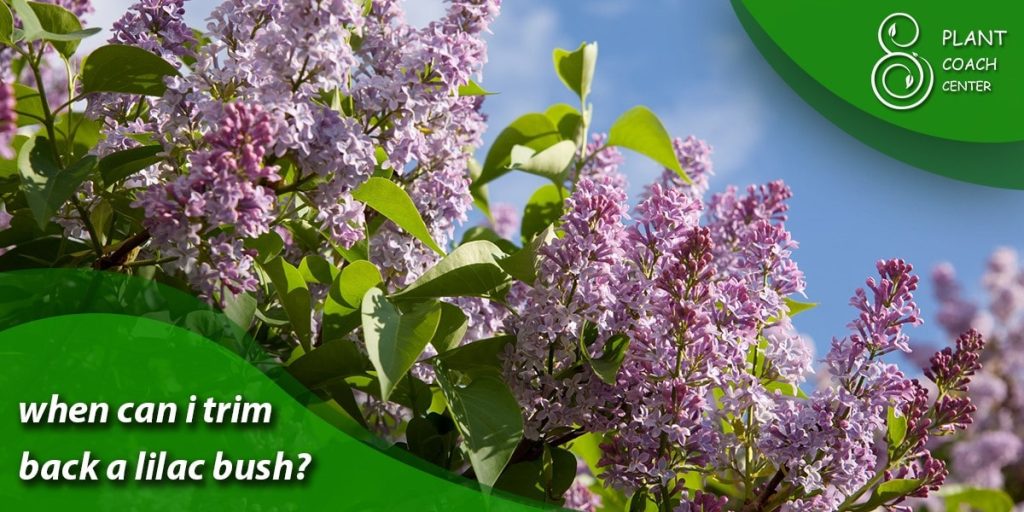
Trimming for Blooms: Boosting Flower Production Through Pruning
Pruning isn’t just about maintaining a tidy appearance; it’s a powerful tool to enhance the blooming prowess of your lilac bushes. By strategically trimming and shaping, you can coax your lilacs into putting on a show-stopping floral display that will envy any garden. Here’s how to harness the art of pruning for maximum flower production:
Encouraging New Growth
Pruning stimulates the growth of new shoots, which are essential for future blossoms. Focus on removing spent flower clusters after they’ve faded. Doing so diverts the plant’s energy from seed production toward developing new buds, ensuring a more abundant flowering in the next season.
Strategic Branch Removal
When pruning for blooms, aim to balance maintaining the plant’s structure and promoting new growth. Identify older branches that have become less productive in terms of flowering. These branches can be pruned back to ground level or near a recent shoot, encouraging the plant to channel its energy into younger, more vibrant units that are more likely to produce profuse blooms.
Timing Matters
Timing plays a crucial role in the blooming potential of your lilac bushes. To boost flower production, prioritize pruning immediately after the lilacs have finished blooming for the season. This timing allows the plant to direct its energy into developing new buds for the following year without disrupting the growth of existing flower buds.
Consistent Deadheading
Consistent deadheading—removing faded flower clusters—is a simple yet effective technique to extend the blooming period of your lilac bushes. By preventing the plant from diverting energy into seed production, you encourage it to continue producing new blooms. Regular deadheading throughout the blooming season can lead to a longer-lasting and more spectacular display.
Fostering Air Circulation
Proper air circulation is vital for preventing disease and ensuring the health of your lilac bushes. Pruning away dense, overcrowded growth opens the plant, allowing light and air to penetrate the inner branches. This reduces the risk of fungal infections and promotes overall plant health, contributing to a more vigorous and vibrant blooming season.
The Science Behind the Snip: How Pruning Affects Lilac Growth
Pruning isn’t just an act of horticultural aesthetics—it’s a science that shapes the growth and development of your lilac bushes. Every cut you make has a profound impact on the plant’s physiology, determining how it allocates resources, where it directs energy, and, ultimately, how it flourishes. Understanding the intricate science behind pruning can empower you to become a master conductor, orchestrating the symphony of growth in your lilac garden.
Apical Dominance and Branching
The tip of a branch, known as the apical meristem, exerts dominance over lateral buds along the stem. When you prune the information, you release the suppression of these lateral buds, encouraging them to sprout and develop into new branches. This phenomenon is central to shaping the branching structure of your lilac bushes. By selectively snipping the dominant shoots, you stimulate the growth of multiple lateral branches, resulting in a fuller and more robust plant.
Hormonal Influence
The act of pruning triggers hormonal responses within the lilac bushes. Auxins, a group of plant hormones, are responsible for promoting apical dominance. When you prune a branch, you remove the source of these hormones, allowing other components to become more active. This hormonal shift influences growth patterns, branching angles, and the plant’s overall shape.
Buds and Bloom Formation
Pruning can significantly impact the formation of flower buds. Lilacs produce flower buds on the previous year’s growth, known as old wood. Strategic pruning that removes more aged wood can encourage the growth of new shoots, leading to the development of fresh flower buds. Understanding this connection allows you to balance maintaining older wood for blooms and promoting new growth for future seasons.
Wound Healing and Defense Mechanisms
Every pruning cut wounds the plant, triggering a series of defense mechanisms. The plant seals the damage by forming a protective layer of tissue, preventing pathogens from entering. However, improper cuts or excessive pruning stress can weaken the plant’s defenses and make it vulnerable to diseases. Learning the proper techniques for clean and precise cuts minimizes damage and supports the plant’s healing processes.
Seasonal Adaptations
The timing of your pruning efforts intersects with the plant’s seasonal adaptations. Pruning during dormancy, for instance, can result in reduced sap bleeding and lowered stress on the plant. Similarly, post-bloom pruning aligns with the plant’s natural energy allocation cycle, optimizing its response to pruning cuts.
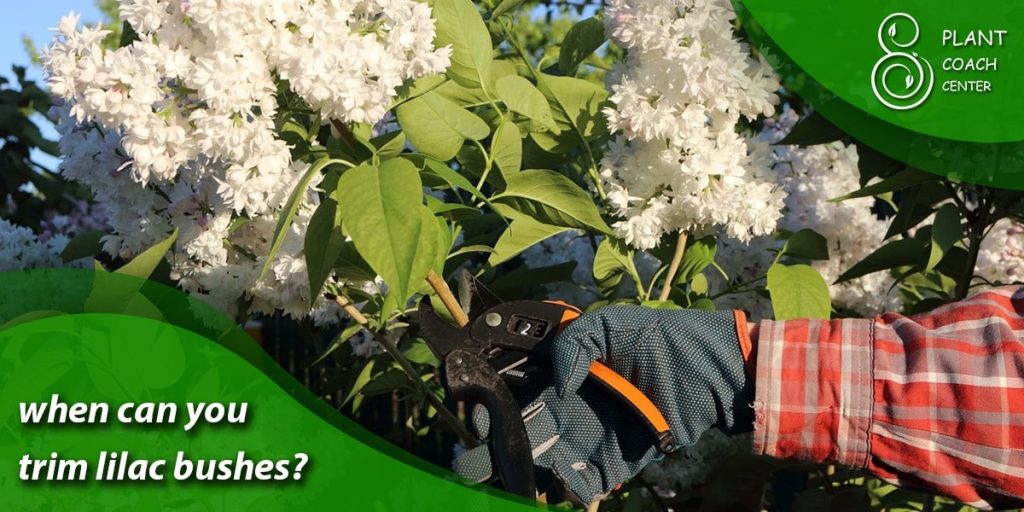
Avoiding Common Pitfalls: Mistakes to Steer Clear of When Pruning Lilacs
Pruning lilac bushes is an art that requires finesse and knowledge. While the rewards can be magnificent, there are several common pitfalls that well-intentioned gardeners should avoid to ensure the long-term health and beauty of their plants. Let’s explore these potential missteps and learn how to navigate around them:
Over-Pruning
Enthusiasm can sometimes lead to overzealous pruning, resulting in the removal of too much growth. This can weaken the lilac bushes, reduce their ability to produce flowers, and even shock the plant. Instead, adopt a conservative approach, focusing on selective cuts that encourage growth while preserving the overall structure.
Timing Blunders
Timing is everything in lilac pruning. Pruning at the wrong time, especially during the late summer or fall, can result in the removal of next year’s flower buds, leaving you with a less vibrant display in the following spring. Always adhere to the appropriate pruning windows, such as post-bloom or early spring, to avoid depriving your lilacs of their future splendor.
Ignoring Proper Tools
Pruning is a delicate process that requires the right tools. Dull or inappropriate equipment can cause ragged cuts that stress the plant and invite diseases. Invest in quality pruning shears, loppers, and saws that ensure clean and precise cuts, minimizing trauma to the lilac bushes.
Neglecting Hygiene
Pruning is more than just snipping away branches; it’s a surgical procedure that can introduce pathogens. You must clean your tools between cuts or plants to avoid spreading diseases. Disinfect your devices with bleach or rubbing alcohol to prevent cross-contamination.
Blind Cuts and Improper Angles
Blind cuts made too close to the main stem can hinder the plant’s healing ability. Similarly, cutting too far from the branch can create decay stubs and attract pests. Always make cuts at the proper angle, about 1/4 inch above a healthy bud, to promote healing and avoid unnecessary stress.
Neglecting Branch Collar
The branch collar is the swollen area at the branch’s base where it joins the main stem. Improper cuts that remove or damage the branch collar can impede the plant’s natural healing mechanisms. To avoid this, cut just outside the branch collar to promote efficient healing and reduce the risk of infections.
Failing to Plan for Structure
Pruning without a clear plan can lead to a haphazard growth pattern that detracts from the lilac’s overall beauty. Before making any cuts, step back and assess the plant’s structure. Consider its natural shape and growth habits, and envision how your cuts will shape its growth.
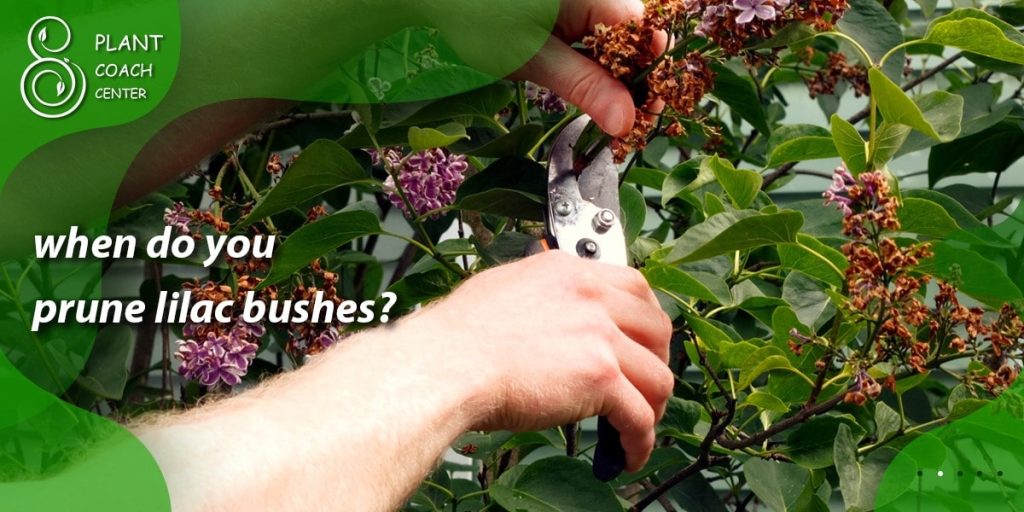
Lilac Pruning for Different Varieties: Tailoring Your Approach
As no two individuals are precisely alike, different lilac varieties showcase unique growth patterns, flowering habits, and pruning needs. To ensure the optimal health and beauty of your lilac garden, it’s crucial to tailor your pruning approach to the specific characteristics of each variety. Here’s a guide to navigating the diverse world of lilac pruning:
Common Lilacs (Syringa vulgaris)
These classic lilacs are known for their intoxicating fragrance and traditional appeal. Common lilacs produce flowers on old wood, so pruning should be done immediately after blooming in late spring or early summer. Focus on removing spent flower clusters and dead or crossing branches to maintain an open and balanced shape.
French Hybrid Lilacs
French hybrids, a cross between common lilacs and other species, boast a range of colors and larger flower clusters. Pruning approaches vary depending on the combination. Some produce flowers on old wood, requiring post-bloom pruning, while others bloom on new wood, allowing for rejuvenation pruning in early spring. Research the specific hybrid you have to determine the best approach.
Dwarf Lilacs
Compact and charming, dwarf lilac varieties require less aggressive pruning. These lilacs tend to be naturally rounded, so focus on removing any dead or damaged branches and light shaping after the bloom period. Avoid excessive pruning that could disrupt their delicate balance.
Japanese Tree Lilacs (Syringa reticulata)
These lilacs grow as small trees and have a different flowering pattern. They produce blooms on new wood, so prune in late winter or early spring before new growth begins. Remove any dead, diseased, or crossing branches and trim for shape. Remember that Japanese tree lilacs require less frequent and lighter pruning than common lilacs.
Persian Lilacs (Syringa x persica)
Persian lilacs are known for their graceful arching branches and more petite, delicate flowers. They benefit from light pruning to shape and remove dead or weak growth after blooming. Avoid heavy pruning, as their natural form is part of their charm.
Chinese Lilacs (Syringa chinensis)
Chinese lilacs are characterized by their long panicles of flowers and extended bloom period. They typically bloom on new wood, allowing for pruning in late winter or early spring. Remove old and dead wood, shape the plant to maintain its form, and encourage new growth.
Conclusion
In the captivating world of lilac bushes, mastering the art of pruning unveils a realm of beauty, science, and connection. Armed with insights into timing, signals, techniques, and variety-specific approaches, you embark on a journey where each precise snip is a testament to your role as a steward of nature’s splendor.
As you delve into the intricacies of lilac pruning, remember that the dance of growth and rejuvenation is a partnership between you and these remarkable plants. Whether cultivating the timeless charm of common lilacs or exploring the unique traits of hybrid and dwarf varieties, your expertise in pruning nurtures a symphony of blooms and shapes that enchant your garden throughout the seasons.
For more gardening wisdom, tools, and inspiration, visit PlantCouchCenter.com and continue your journey of cultivating nature’s wonders.
When should I prune my lilac bushes?
Prune lilac bushes immediately after blooming in late spring or early summer.
Can I prune my lilacs in the fall?
It's best to avoid fall pruning as it might remove next year's flower buds; opt for post-bloom or early spring pruning.
How do I revive an overgrown lilac bush?
Perform gradual rejuvenation pruning, removing about a third of the oldest wood each year for three years to encourage new growth and better blooms.







